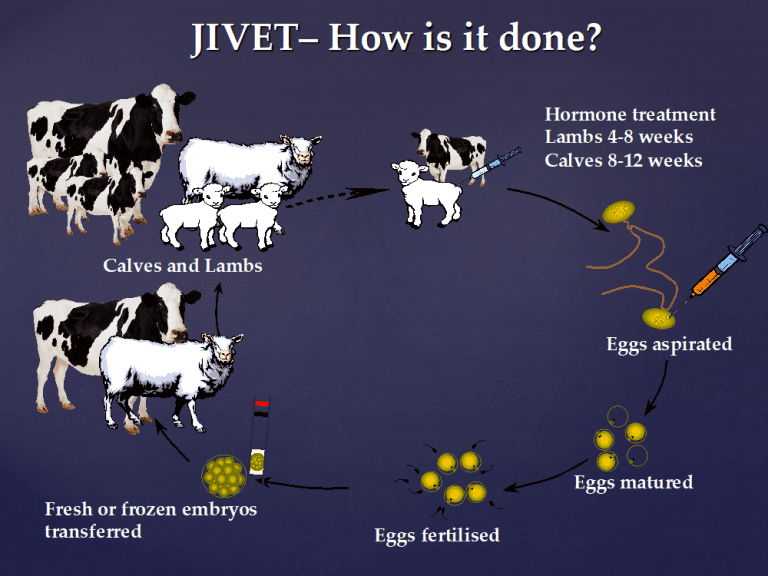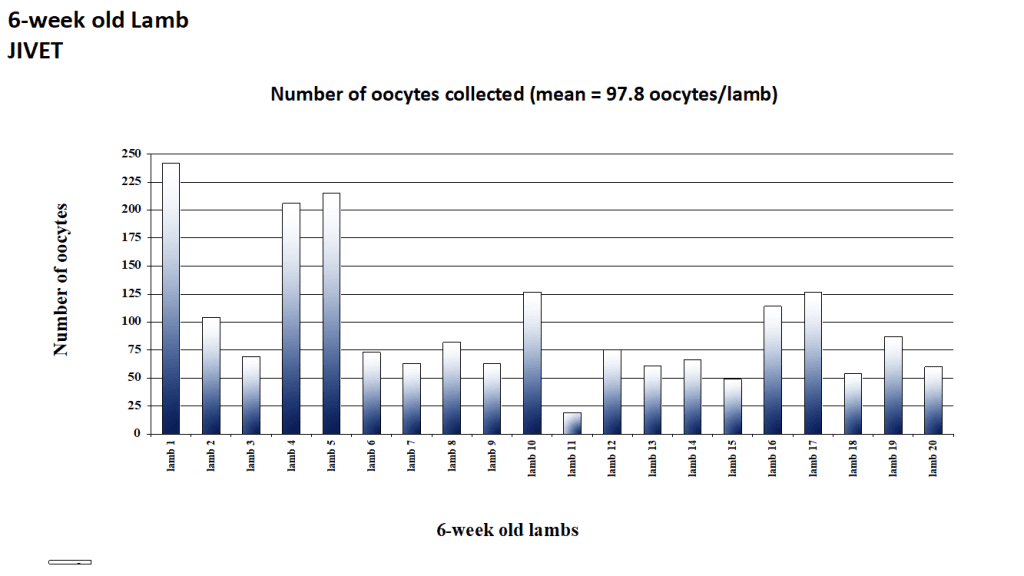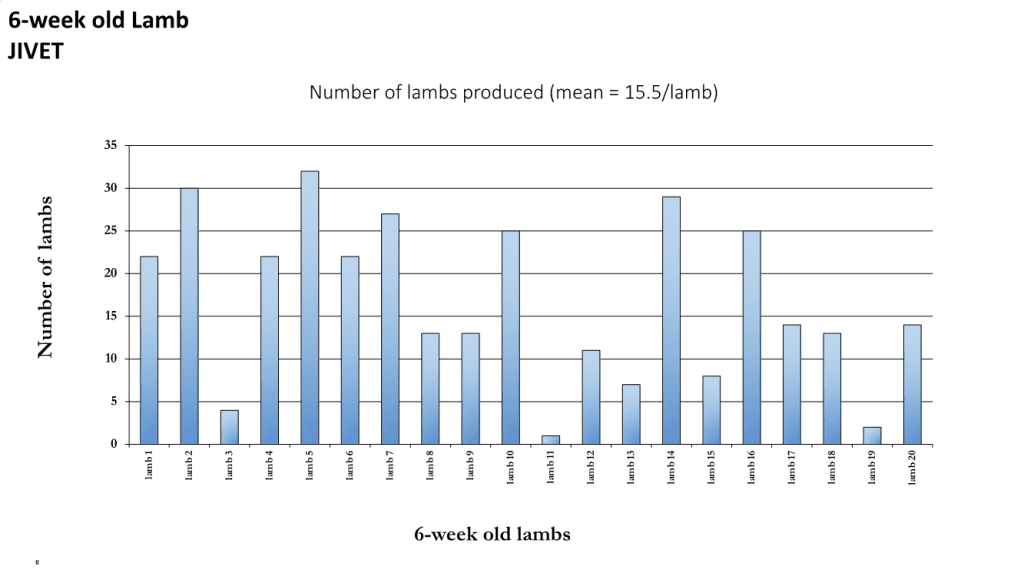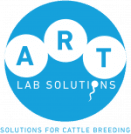Written by Dr Jen Kelly.
The ability to utilise oocytes from juvenile animals for accelerated genetic gain and rapid multiplication of animals has significant implications for livestock improvement programs.


Image reprinted with kind permission, JM Kelly
However there is great variation in response and oocyte developmental capability both between and within animals.
Age 8 weeks | COCs recovered | Cleavage (%) | Blastocysts | Pregnancy (%) | |
% (of cleaved) | No. transferred/total | ||||
Calf 1 | 28 | 18/28 (64%) | 67% | 10/12 | 5/10 (50%) |
Calf 2 | 11 | 9/11 (82%) | 44% | 4/4 | 2/4 (50%) |
Calf 3 | 28 | 23/28 (82%) | 78% | 14/18 | 4/14 (29%) |
Kelly et al Proceedings of the 14th International Congress on Animal Reproduction, Stockholm, 2:110 (2000).
Oocytes collected from 6-week old Merino lambs undergoing JIVET procedures indicate that the response both between and within animals can vary greatly (Kelly et al Theriogenology 63 (2005) 1876–1890).




